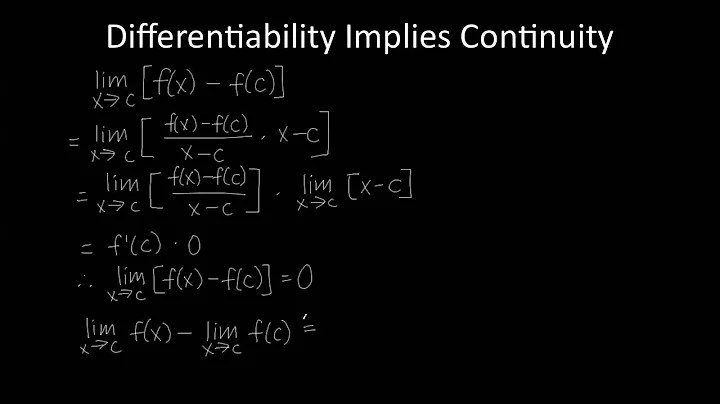Why Does Joint Continuity Imply Separate Continuity
Does factor-wise continuity imply continuity?
No, separate continuity does not in general imply joint continuity. The function
$$f:\Bbb R^2\to\Bbb R:\langle x,y\rangle\mapsto\begin{cases}\frac{xy}{x^2+y^2}&,\text{if }\langle x,y\rangle\ne\langle0,0\rangle\\\\0,&\text{if }\langle x,y\rangle=\langle 0,0\rangle\end{cases}$$
is continuous everywhere except at the origin. At the origin it is continuous in each variable separately, but it is not continuous.
Added: Useful keywords on which to search are separate continuity and joint continuity. Z. Piotrowski, a former colleague of mine, did quite a lot of work in this area; you'll find many of his papers here, and in them both results and further references. Be warned, though, that the links don't always match the text: the link to the comprehensive (if now dated) survey Separate and joint continuity is actually at number $17$, not at number $19$. As I recall, there are more results giving conditions under which the set of points of continuity contains a dense $G_\delta$-set in $X\times Y$ than there are giving conditions that guarantee that a separately continuous function is jointly continuous.
Added 8 March 2015: Number $51$ is an updated survey.
Related videos on Youtube
Comments
-
Let $f$ denote a map from a product space $X \times Y$ to $Z$. If for every $x\in X$, the map $f(x,-)$ is continuous, and the same holds for every $y \in Y$, then is $f$ continuous in general? If not, is there any condition to be imposed to make $f$ continuous?
-
A categorical reason why you would not believe this statement holds is that you are asking of a product to satisfy a coproduct property. This is why at first glance it must feel false. The product behaves well when you project it on its components, i.e. $X \times Y \to X$ ; the coproduct behaves well when you inject its components in, i.e. $X \to X \times Y$. Notice that the maps $f(x,-)$ are nothing more than composing $\pi_Y : Y \to X \times Y$ defined by $\pi_Y(y) = (x,y)$ with $f$, i.e. $f(x,-) = f \circ \pi_Y$.
-
Interesting question. Does the converse hold by chance? (I'm guessing not.)
-
-
Curiosity : Why did you use $\langle x,y \rangle$ instead of $(x,y)$ for the coordinates? This doesn't feel natural, I've never seen that before.
-
Well, in set theory, bivariate functions are actually functions from ordered pairs to the result set, i.e. $f(x,y) := f(\langle x,y\rangle)$.
-
@Mario Carneiro : You are suggesting that $\langle x,y \rangle$ is a set-theoretic notation for the ordered pair? I know ordered pairs are defined something like $\langle x,y \rangle = \{x, \{x,y \} \}$ so I understand the need for a notation but just let me know if I am wrong.
-
@Patrick: Yes, the notation comes from set theory. I habitually use it, partly because a lot of my background is in set theory, and partly simply because I prefer it: ordinary parentheses have enough work to do!
-
I'm pretty sure $\langle x,y\rangle$ is the standard notation for ordered pairs in general. The definition of the ordered pair in set theory is $\langle x,y\rangle := \{\{x\},\{x,y\}\}$, which is what I think you are thinking of.
-
@Mario Carneiro : Thanks, I didn't know that. Can we chat elsewhere? I have a few questions but I don't want to fill this question, this is getting out of subject relatively to the question.
-
Nice reference, Piotrowski's paper. Thanks!
-
@Andres: My pleasure!
-
But this function isn't factor wise continuous, because $f (0,y) $ isnt continuous in y
-
Sorry. I agree now
Recents
Related
Source: https://9to5science.com/does-factor-wise-continuity-imply-continuity





0 Response to "Why Does Joint Continuity Imply Separate Continuity"
Kommentar veröffentlichen